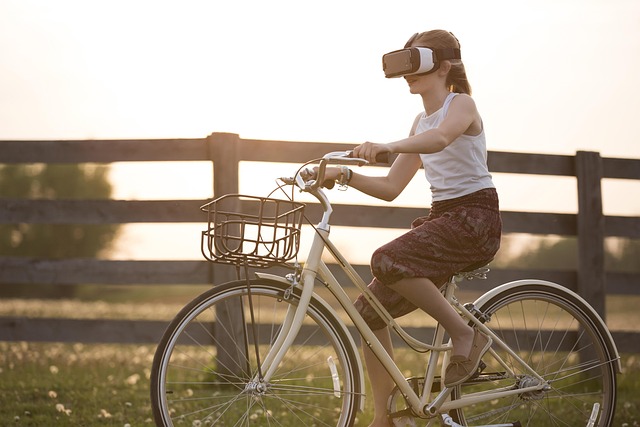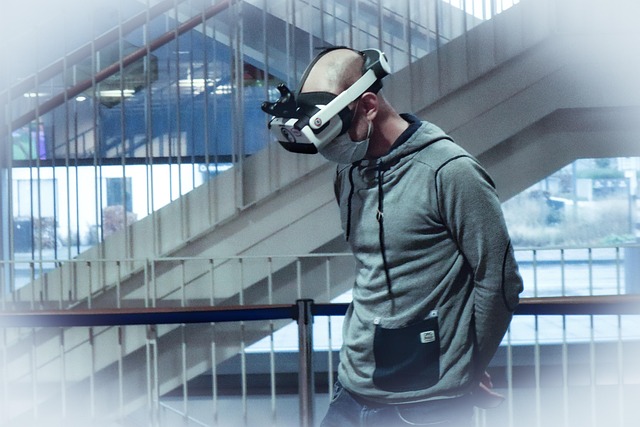The concept of virtual education has evolved from simple online portals into richly interactive spaces where learners can move, manipulate, and collaborate within three‑dimensional worlds. By embedding virtual reality (VR) and augmented reality (AR) technologies into the metaverse, educators are reshaping how concepts are demonstrated, how skills are practiced, and how knowledge is assessed. This shift is not merely a novelty; it is driven by research that shows immersive environments enhance memory retention, engagement, and the ability to apply learning in real‑world contexts. As the metaverse continues to mature, the intersection of VR, AR, and virtual education is becoming a cornerstone of modern pedagogy, inviting educators, students, and technologists to rethink interaction in digital classrooms.
Creating Immersive Learning Environments
Immersive learning environments are constructed by layering digital content over physical or virtual spaces, allowing learners to experience scenarios that would otherwise be impossible or unsafe to recreate in a traditional classroom. In the metaverse, these environments are designed with spatial audio, haptic feedback, and realistic physics engines, which together provide a multisensory experience. For instance, a biology lesson may transport students into a simulated coral reef where they can observe marine life in its natural habitat, or a history class might let them walk through a reconstructed ancient city, interacting with artifacts that respond to touch and gesture. These environments are built using 3D modeling tools, game engines, and collaborative platforms that support real‑time updates and user‑generated content. The key to successful immersion lies in the seamless integration of narrative, interactivity, and feedback, ensuring that learners remain actively engaged rather than passive observers.
Virtual Reality in Education
Virtual reality immerses users in a fully digital space that can mimic real environments or create entirely fantastical settings. In educational contexts, VR offers hands‑on practice for complex procedures—such as surgical training, flight simulations, or laboratory experiments—without the associated risk or resource constraints. Learners wearing headsets can navigate 3D models, manipulate virtual instruments, and receive immediate visual and auditory cues that reinforce correct technique. Research indicates that VR can improve procedural recall by up to 30% compared to conventional video tutorials. Moreover, VR enables experiential learning at scale; a single virtual laboratory can host hundreds of students simultaneously, each interacting independently or in coordinated groups. The metaverse’s persistent worlds further allow learners to revisit these VR experiences, enabling spaced repetition and mastery over time.
Augmented Reality in Education
Augmented reality overlays digital information onto the real world, bridging the gap between physical objects and virtual data. AR is particularly effective for contextual learning, where students can point a device at a textbook, a model, or even a classroom wall and see interactive annotations, 3D diagrams, or live data streams. In STEM education, AR can transform static diagrams into dynamic simulations: a chemistry lesson might display animated molecular structures that students can rotate and examine from every angle. In the arts, AR can project virtual paint layers onto physical canvases, allowing artists to experiment without committing to the medium. The immediacy of AR fosters a sense of discovery, encouraging learners to explore their surroundings and recognize the applicability of theoretical concepts in everyday life. Within the metaverse, AR layers can be shared across users, enabling collaborative annotation and joint problem‑solving in shared spaces.
Interaction Mechanics and Pedagogical Design
Interaction is the lifeblood of virtual education. Designers must translate pedagogical goals into tangible affordances—such as gesture controls, voice commands, and object manipulation—that support active learning. A common pattern is the “learning by doing” loop, where learners first observe a process, then replicate it within the virtual environment, and finally receive feedback that guides refinement. This iterative cycle is amplified in the metaverse by real‑time collaboration tools: multiple avatars can co‑create a 3D model, debate hypotheses, or co‑solve puzzles, mirroring the collaborative nature of professional practice. Moreover, the use of spatial audio cues helps orient learners within group interactions, ensuring that dialogue remains natural and that every participant feels heard. Adaptive interfaces can adjust difficulty levels based on learner performance, providing a personalized pathway that respects individual pace while maintaining group cohesion.
Collaborative Learning in Shared Spaces
Shared virtual spaces enable learners from different locations to meet in a single, coherent environment. Within these spaces, avatars can move freely, exchange objects, and engage in real‑time problem solving. For example, a geography class might assemble a 3D model of the Earth, with students collaboratively annotating tectonic plates, climate zones, and population data. The use of collaborative whiteboards, shared text, and live chat ensures that communication remains fluid. Importantly, collaborative learning in the metaverse leverages the sense of presence—students feel physically co‑located with their peers—which has been shown to increase accountability and social presence. The result is a learning environment that mirrors, and sometimes enhances, the dynamics of a physical classroom while offering unique possibilities for cross‑cultural interaction and resource sharing.
Assessment and Feedback Mechanisms
Traditional assessment methods—multiple‑choice tests, essays, and oral exams—are complemented by immersive metrics in the metaverse. System logs capture nuanced data such as time spent on tasks, frequency of interaction, and success rates on exploratory actions. These analytics provide formative feedback that is immediate and context‑specific. For instance, if a student repeatedly misplaces a virtual tool, the system can trigger a hint or redirect the learning path. Moreover, performance in collaborative tasks can be evaluated by observing contributions to shared projects, fostering assessment of teamwork skills. The immersive nature of VR and AR also allows for authentic assessments: a student might conduct a virtual experiment and record observations in a lab notebook, mirroring real scientific practice. This approach not only reinforces learning outcomes but also develops metacognitive skills as learners reflect on their process.
Designing for Inclusive Interaction
Inclusive design is paramount when deploying virtual education in the metaverse. Accessibility features such as customizable controls, adjustable text sizes, and auditory descriptions ensure that learners with diverse abilities can participate fully. Haptic devices can provide tactile feedback for students with visual impairments, while motion‑controlled interfaces accommodate those who rely on physical interaction rather than eye tracking. Additionally, cultural sensitivity in avatar representation and environmental design prevents alienation and fosters a welcoming learning community. By embedding inclusivity into the core design, educators can guarantee that the metaverse becomes a democratized platform rather than a privileged niche.
Challenges and Mitigation Strategies
Despite the promise of virtual education, several challenges persist. High hardware costs can limit access for institutions and students in low‑resource settings. Mitigation involves leveraging cloud‑based rendering to offload processing from local devices, thereby reducing the need for expensive GPUs. Network latency and bandwidth constraints can degrade the immersive experience, especially in real‑time collaboration. Investing in edge computing and optimizing content delivery networks can alleviate these issues. Additionally, data privacy concerns arise from the collection of detailed behavioral logs. Transparent data policies, anonymization techniques, and user consent mechanisms are essential to maintain trust. Finally, educator readiness must be addressed; professional development programs that blend pedagogical theory with technical training help teachers translate vision into practice.
Future Outlook: The Evolving Metaverse Classroom
Looking forward, the metaverse is poised to transform virtual education into a fully embodied, socially rich, and pedagogically rigorous experience. Advances in artificial intelligence will enable adaptive avatars that can guide, mentor, and provide individualized support at scale. As mixed‑reality devices become more affordable and lightweight, the barrier to entry will lower, expanding access to immersive learning. Moreover, the integration of blockchain for credentialing could allow students to receive verifiable digital badges for skills acquired within virtual environments. Researchers anticipate that the metaverse will support cross‑disciplinary curricula that combine science, technology, engineering, arts, and mathematics (STEAM) in ways that traditional classrooms cannot. Ultimately, the metaverse will not replace physical classrooms but will complement them, offering parallel pathways for exploration, collaboration, and mastery.




